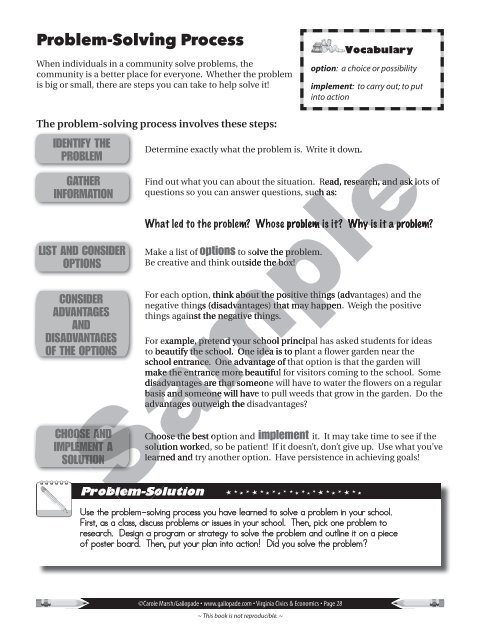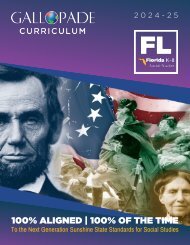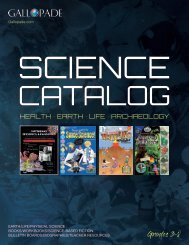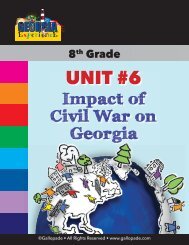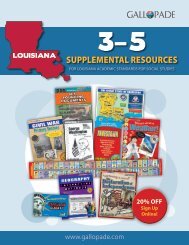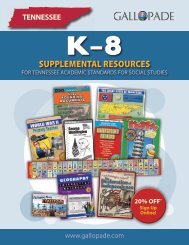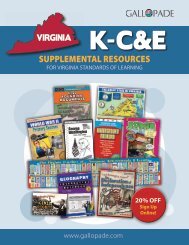Virginia Experience Civics & Economics Social Studies
The Virginia Experience effectively teaches students about United States history. All curriculum materials cover foundations of the U.S. government, citizenship, political process, understanding government, judicial system, public policy, economy, and finances as required by the Virginia Standards of Learning (SOL).
The Virginia Experience effectively teaches students about United States history. All curriculum materials cover foundations of the U.S. government, citizenship, political process, understanding government, judicial system, public policy, economy, and finances as required by the Virginia Standards of Learning (SOL).
Create successful ePaper yourself
Turn your PDF publications into a flip-book with our unique Google optimized e-Paper software.
Problem-Solving Process<br />
When individuals in a community solve problems, the<br />
community is a better place for everyone. Whether the problem<br />
is big or small, there are steps you can take to help solve it!<br />
Vocabulary<br />
option: a choice or possibility<br />
implement: to carry out; to put<br />
into action<br />
The problem-solving process involves these steps:<br />
IDENTIFY THE<br />
PROBLEM<br />
GATHER<br />
INFORMATION<br />
LIST AND CONSIDER<br />
OPTIONS<br />
CONSIDER<br />
ADVANTAGES<br />
AND<br />
DISADVANTAGES<br />
OF THE OPTIONS<br />
CHOOSE AND<br />
IMPLEMENT A<br />
SOLUTION<br />
Problem-Solution<br />
Determine exactly what the problem is. Write it down.<br />
Find out what you can about the situation. Read, research, and ask lots of<br />
questions so you can answer questions, such as:<br />
What led to the problem? Whose problem is it? Why is it a problem?<br />
Make a list of options to solve the problem.<br />
Be creative and think outside the box!<br />
For each option, think about the positive things (advantages) and the<br />
negative things (disadvantages) that may happen. Weigh the positive<br />
things against the negative things.<br />
For example, pretend your school principal has asked students for ideas<br />
to beautify the school. One idea is to plant a flower garden near the<br />
school entrance. One advantage of that option is that the garden will<br />
make the entrance more beautiful for visitors coming to the school. Some<br />
disadvantages are that someone will have to water the flowers on a regular<br />
basis and someone will have to pull weeds that grow in the garden. Do the<br />
advantages outweigh the disadvantages?<br />
SOLUTIONSample<br />
Sample<br />
Choose the best option and implement it. It may take time to see if the<br />
solution worked, so be patient! If it doesn’t, don’t give up. Use what you’ve<br />
learned and try another option. Have persistence in achieving goals!<br />
Use the problem-solving process you have learned to solve a problem in your school.<br />
First, as a class, discuss problems or issues in your school. Then, pick one problem to<br />
research. Design a program or strategy to solve the problem and outline it on a piece<br />
of poster board. Then, put your plan into action! Did you solve the problem?<br />
©Carole Marsh/Gallopade • www.gallopade.com • <strong>Virginia</strong> <strong>Civics</strong> & <strong>Economics</strong> • Page 28<br />
~ This book is not reproducible. ~


